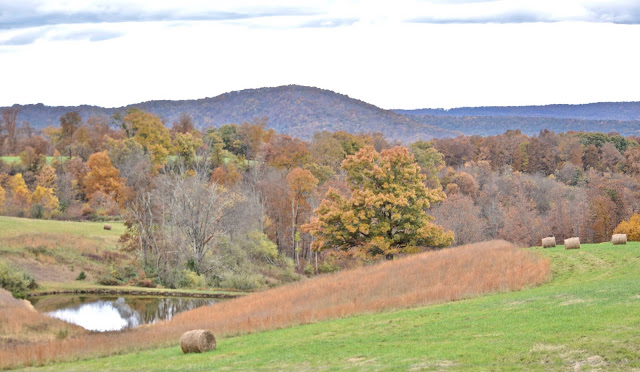 |
| Sunrise, Nov 27, 2018. Sky and Earth. |
I’m in an almost bizarre convergence among three currents flowing from reading Iris Murdoch, Barbara Kingsolver’s Unsheltered, and S.H. Nasr/Frithjoff Schuon. There’s no beginning; no end. So maybe the place to continue is in the timeless, the Reality that Nasr/Schuon and Sufi mystics assert is the only way to make sufficient sense of being today (or any other day). For example, Schuon warns against the peril of splitting the ideal and real:
“Nothing is more false than the conventional opposition between ‘idealism’ and ‘realism,’ which amounts to insinuating that the ‘ideal’ is not ‘real,’ and conversely as if an ideal situated outside reality had the smallest value and as if reality were always situated on a lower level than what may be called an ‘ideal’; to believe this is to think in a quantitative, not a qualitative, mode.” (Light on the Ancient Worlds, p. 15, footnote 14).
True Reality resides in the absolute, that which transcends our mundane experience, best known in this world in the qualities God sends down, lent for humans to manifest. Trouble comes in when our knowing gets too limited by human restrictions such as those set by behaviorists presuming to be the sole proprietor of the true. The essence gets lost in ideologies of facts, data, cogito ergo sum, philosophy reduced to existentialism... And equally by religion stripped of mysticism when faith is dominated by the scientific mind and when theologians succumb to status as in the academy. Of course, educators already sold out in order to sit alongside physics, to get the grants, and to publish in journals that count. Who among us has clean hands?
Kingsolver splendidly explores today’s terrain by looking back a hundred years to when the theory of evolution struggled to find a place in culture dominated by religious fundamentalists as well as consumerism blindly eating up the environment. Alongside this, she weaves a contemporary and prescient collage of traumatic family life; although I wince at saying “life” because she portrays dramatically how distressingly distant today’s home may be from Life, from the Alive, the Loving.
The poignancy of these streams’ convergence builds also from Murdoch’s portrayals of dysfunctional abuses of Power and Love. Her novels roam about over most of the 20th-century-world disheartened by war, environmental wreckage, abusive partners, and varied desiccations of culture (across arts and sciences). Much of this broken-down, broken-hearted condition seems occasioned through allowing the personal and social orders to be ruled by the pronouncement “God is dead.” The destruction comes whether players are conscious or not that their lives have strayed far from devotion to Truth, Beauty, Justice, and the other qualities necessary to approach the depths of love and the responsibilities of power.
Although Nasr and Schuon expose the catastrophe of science, particularly evolutionary theory, masquerading as God, they also argue that scientific knowing has a vital role in a proper ecology of epistemology and ontology.
“The religious view of the order of nature must be reasserted on the metaphysical, philosophical, cosmological, and scientific levels as legitimate knowledge without necessarily denying modern scientific knowledge, as long as it is remembered that this latter science is the result of very particular questions posed to nature” (Religion and the Order of Nature, p. 6).
Interestingly, Kingsolver’s gift includes the compelling drama evident when religion gets big-headed and heart-short. In this convergence of currents, the arrogant man of science looks scarily like unto the preacher man/woman blinded by God-less religion.
I’m now in the midst of Kingsolver’s novel, having just been struck with a wash of empathy for the bigot I’d previously found impossible to like. I don’t expect to ever like this character, but I feel some compassion, some sadness for how he gave his life for the fake “American dream.” He’s the person who long ago dried up inside, who suffers greatly from a failing body, and yet clings to dead faith. Perhaps his bitterness is all that sustains his breath.
I’ve become pretty sure that any hope we have for moving ahead in this country depends on developing empathy that reaches across the political chasm. Instead of blasting at the “other” in Facebook-ish social media as well as in our intimate family spaces, humans who would be god-like just have to live a deeper level into Love and Power… Peace, Justice, Truth …
 |
| Sunset. Sky, Earth, Sea. |














